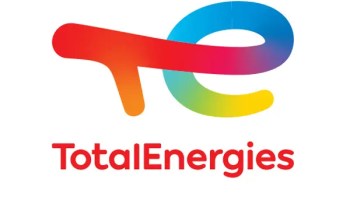The Energy Information Administration sees Brent crude oil prices averaging $107 per barrel in the second quarter this year, according to the latest Short Term Energy Outlook (STEO) published on Tuesday.
Brent crude prices averaged $105 per barrel in April.
Also, the EIA sees prices dipping in the second half of the year to $103 per barrel, according to the STEO, before falling to an average of $97 per barrel next year—more than double the average price for 2020.
However, the EIA cautioned that it made these projections on May 5, prior to any EU ban on Russian oil imports, which, the EIA says, would raise prices further.
For WTI crude, the EIA estimates that the full-year 2022 price will average $98.20, slipping to $9.24 next year.
U.S. crude oil production will average 11.9 million bpd in 2022, up just 700,000 from the average last year. Next year, however, the EIA sees the increase as much more substantial, averaging 12.8 million bpd in 2023—achieving a new record.
The EIA prefaced its projections by saying, “The May Short-Term Energy Outlook (STEO) is subject to heightened levels of uncertainty resulting from a variety of factors, including Russia’s full-scale invasion of Ukraine.”
The EIA pegged April 2022 global consumption of petroleum and liquid fuels at 97.4 million barrels per day—an increase of 2.1 million bpd from last April. Full-year 202 consumption is expected to average 99.6 million bpd—a 200,000 bpd decrease from its April STEO.
The EIA estimates that gasoline prices, which have recently hit new highs in the United States, will average $3.82 this year and $3.51 per gallon next year—up from $3.02 per gallon in 2021 and $2.18 per gallon in 2020.
The Brent crude oil spot price averaged $105 per barrel (b) in April, a $13/b decrease from March. Although down from March, crude oil prices remain above $100/b following Russia’s full-scale invasion of Ukraine.
Sanctions on Russia and other independent corporate actions contributed to falling oil production in Russia and continue to create significant market uncertainties about the potential for further oil supply disruptions.
These events occurred against a backdrop of low oil inventories and persistent upward oil price pressures.
Global oil inventory draws averaged 1.7 million barrels per day (b/d) from the third quarter of 2020 (3Q20) through the end of 2021. We estimate that commercial oil inventories in the OECD ended 1Q22 at 2.63 billion barrels, up slightly from February, which was the lowest level since April 2014.
“We estimate that 97.4 million b/d of petroleum and liquid fuels was consumed globally in April 2022, an increase of 2.1 million b/d from April 2021. We forecast that global consumption of petroleum and liquid fuels will average 99.6 million b/d for all of 2022,”
“We revised down our forecast for 2022 global consumption of petroleum and liquid fuels by 0.2 million b/d from the April STEO, primarily as a result of downward revisions to consumption growth in China and the United States. We forecast that global consumption of petroleum and liquid fuels will increase by 1.9 million b/d in 2023 to average 101.5 million b/d.”
On Gas, the report says in April, the Henry Hub natural gas spot price averaged $6.59 per million British thermal units (MMBtu), which was up from the March average of $4.90/MMBtu and higher than the April 2021 average of $2.66/MMBtu.
“We expect the Henry Hub price to average $7.83/MMBtu in 2Q22 and average $8.59/MMBtu in 2H22.
High forecast natural gas prices reflect our expectation that natural gas storage levels will remain less than the five-year (2017–2021) average this summer. Lower-than-average storage levels partly result from limited opportunities for natural gas-to-coal switching for power generation, which we forecast will keep the demand for natural gas for power generation high despite high prices.
Natural gas prices could rise significantly above forecast levels if summer temperatures are hotter than assumed in this forecast and electricity demand is higher. In addition, we expect that U.S. liquefied natural gas exports (LNG) will remain high during the summer. We expect the Henry Hub spot price will average $4.74/MMBtu in 2023. The forecast drop in prices for 2023 reflects our expectation that the rate of natural gas production will increase next year while LNG export and demand growth slow, contributing to higher storage levels in 2023 than in 2022.”





